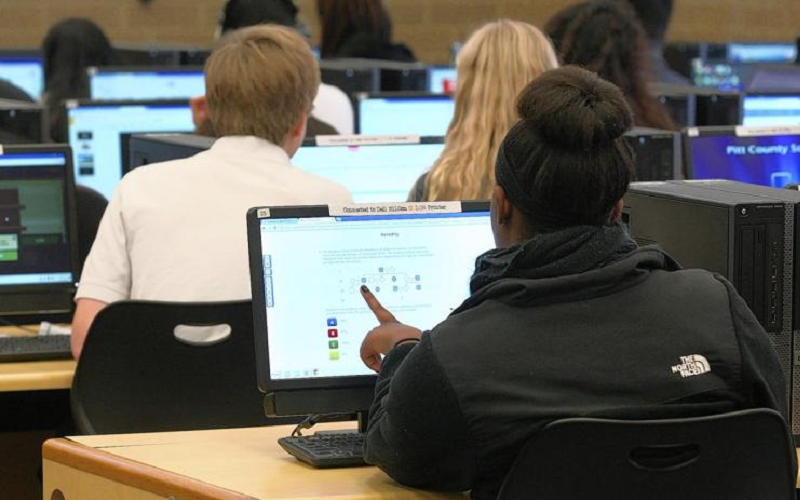
high tech schools
On June 8, 1934, as he continued work on the longest of his Gedanke manuscripts, Arnold Schoenberg wrote some thoughts about how listeners process musical information:
The ability to recognize depends very largely upon familiarity with related, similar, or like objects… Consequently in many ways recognition is re-recognition. This is so even where a (relatively) new object is involved whose (old) constituent elements are familiar and can be recognized (Schoenberg 2006, 117).
A little over a year later, as Schoenberg prepared for his appointment as professor of composition as the University of Southern California (USC) in the fall of 1935, he sat down for a radio interview with the Dean of the School of Music, Max van Leuven Swarthout. Swarthout, who had studied as a young man in Europe, wanted to know about Schoenberg’s impressions of the differences between music education in his home and adopted countries.
Schoenberg, who had been teaching American students since his arrival in Boston in fall 1933, found that these students were not without talent, but he was concerned about their lack of knowledge of musical literature. Only through the “familiarity with related, similar, or like objects,” he believed, were these students ever going to be able to engage in the process of recognition and re-recognition he described above.
Thus, access to performances (for the ear) and musical notation (for the eye) were of paramount importance. Schoenberg told Swarthout that in Europe students could buy inexpensive study scores and attend as many concerts at opera houses and symphony halls as they liked for low prices, and he was frustrated that these opportunities were not readily available to his American students.
Schoenberg’s first students in Southern California were not only music majors. In fact, his contract with USC required him, in addition to teaching courses for specialists, to give “extra-curricular lectures” each week. The university printed announcements informing the public not only of his two courses (“The Art of Contrapuntal Composition” and “Thematic Construction”) but also the two lecture series. One series was called “The Elements of Musical Forms as Determined by Analysis.”
The university officially named the other “The Evaluation of Musical Works,” but Schoenberg preferred to call it a “School of Criticism.” The two lecture series, open to all university students as well as the general public, were a form of community outreach. The university produced a publicity flier touting only the lecture series, perhaps in an effort to drum up business. The publicity flier, in Folder 50 of the Gerald Strang Collection at the Arnold Schönberg Center (ASC), indicates that attendees had the option to pay $1 per lecture, $15 for one lecture series, or $25 for both series of lectures.
There is every indication that Schoenberg took these lecture series seriously, and believed that the general principle of recognition and re-recognition was as essential for their musical understanding as it was for his more advanced students. He sought as many students as possible for these lectures, particularly for the “School of Criticism” series. In November 1935 he wrote to Bessie Bartlett Frankel, President of the California Federation of Music Clubs, to recruit average concertgoers to come:
I would very much like to have you sometimes or at least once among the audience of this class, because I know, what I am doing there is of the greatest importance for everybody who is interested in music. I know from my experience of nearly forty years, that a real understanding for music has to be based on a sound capacity to distinguish between value and non-value. And I know, too, how new my attempt, to bring the amateurs not only, but also the musician to a real knowledge of basic elements for appreciation.
Schoenberg left behind no notes for these lectures. What we know about them can be gleaned from the class notes of two students, Gerald Strang and Bernice Abrams Geiringer, which are now on deposit at the ASC and the University of California Santa Barbara, respectively. This chart shows that Schoenberg usually discussed one composition per week between October 7, 1935, and January 27, 1936, but sometimes he spent two weeks on a single composition.
This being the height of the Great Depression, it is not reasonable to assume that students attending the lectures purchased a copy of every score he discussed, and Schoenberg’s comments to Swarthout indicate that he understood this was not practical. Rather, Schoenberg projected scores on a screen. It is possible that he used an opaque projector, a predecessor of an overhead projector.
We know that Schoenberg was accustomed to using this technology in his classes and lectures in Europe from a letter Gertrud Schoenberg wrote to Princeton University in advance of Schoenberg’s lecture there on composition with twelve tones in 1934.
